#histories of Middle-earth
Text
🎶❄️ Does it ever drive you crazy
Just how fast the night changes? 🌼🎵
#Erestor#did i ever imagine i would draw erestor to the music of one direction#no#but never let it be said i would not do things for a concept#tolkien#the lord of the rings#the silmarillion#histories of middle-earth#Glorestor#because of course it is 😭#ulan's art
51 notes
·
View notes
Text
A few thoughts on Galadriel's Valor, Story, and "Girl-boss" energy

I've seen many things written about the "girl-bossification" of Galadriel, as though she 1. did not need anything extra given to her character, 2. she was diplomatically power hungry rather than vengeful, and 3. she was already Married and had her daughter by the time this show was taking place.
I'm not attempting to defend any creative choices or say why the show is "right" to portray them as they have, but I do think some things could be discussed with a bit more context and I do love some lore-diving and graceful discussions, so here goes.
To the first part (1.), she is recorded as not only engaging in the first kinslaying (she fought AGAINST Feanor, protecting the Teleri, but almost certainly killed other elves and elves aren't known for their weakness), but Tolkien himself said she was a "great warrior" in her youth. In the same vein, canonically she did initially go to Middle-earth to rule, but that is not clearly stated to be false here, merely that she is currently fueled by anger, pride, and vengeance, and rejecting the Valar's pardon which is canon for the most part (pg. 242 Unfinished Tales). Again, not defending, but I do think that this fits into established context as well as the next two points.
2. We're not given a clear reason as to why she, specifically, comes to Middle-earth in the show. There is a general reason why the elves go, yet not her. But I also realize that such logic goes both ways and I also understand that adapted stories are told by admissions AND omissions. However,
3. We know soooo little as to the intentions of the story yet. There's so much left to see, but the one thing I do think is the most important to bring up is the fact that this "character reversal" has been done before, by Peter Jackson and the character of Aragorn.
Aragorn in the books not only knows he's the king, but is downright giddy and excited to get going, reforging Narsil into Anduril before they even leave Rivendell. The rest of the trilogy is him slowly spreading his influence and making his grand "Return" Yet, in the movies it's the exact opposite. Movie Aragorn is not just reluctant, but almost hostile to the mere idea of reclaiming his throne, and slowly throughout the series he is pushed towards that reclamation of power.
In the RoP, we see Alatáriel/Artanis (Galadriel) as the daughter of a great Noldorin lord, single and alone in a quest for vengeance. Yet, we know she will become the most influential Elf in all of Middle-earth. The reason she doesn't fit that bill yet is because THAT is the story that I think they are telling. Literally the first episode is setting up the journey towards finally letting go of the sword, claiming the influential (but non-martial) power of her birthright and marrying (quite scandalously, I might add) a sindar elf that will unite the Noldorin and Sindarin Elves into a United people.
I think the story we are going to see is Alatáriel, the sword-wielding daughter of Arafinwë, become the Galadriel, Queen of the Elves of Middle-earth.
(*POSSIBLE SPOILERS FOR SHOW-ONLY WATCHERS*)
After all, when Sauron/Annatar does return and sway the Elven people, there are only two elves that find him untrustworthy and reject him (Galadriel and Elrond).... and the fact that no one listens to her has always been questionable and unexplained in the cannon narrative. If the most powerful and influential leader alive said someone seems sketchy and shouldn't be trusted, it doesn't make sense that you'd ignore those warnings off-hand, especially if she was regarded as one of the wisest elves alive.
But if it's a blood thirsty, vengeful war-leader who has spurned the commands of her king who is saying that this beautiful and gracious elf who has been kind and generous and infinitely helpful to all of her people is actually evil incarnate, perhaps she would not be given much credence and would instead be ignored. It might actually HELP explain a few things lol.
(*POSSIBLE SPOILERS CONCLUDED*)
In the end, we will simply have to wait and see. But I think she's (Morfydd Clark) bringing something to Galadriel we have never seen but always known about, and that's a personal history. Just like Aragorn, I'd bet my last penny that we will see the Galadriel we all know and love, but that's the journey she is on. And I am so excited to see it happen!
But perhaps I'm like Elrond and harbour naive hope for the future, only time (or perhaps a certain Elf's magical mirror) will tell.
In any case, I wish you all well!
Na lû e-govaded 'wîn, mellon nin!
~ Ramoth13
#ramoth13#fandom#lord of the rings#silmarillion#the hobbit#rings of power#galadriel#jrr tolkien#tolkien elves#tolkien#histories of Middle-earth#tolkien lore#morfydd clark#noldor elves#Noldorin#Sindarin#sindar elves#the rings of power
225 notes
·
View notes
Text
So here's one of the coolest things that has happened to me as a Tolkien nut and an amateur medievalist. It's also impacted my view of the way Tolkien writes women.
Here's Carl Stephenson in MEDIEVAL FEUDALISM, explaining the roots of the ceremony of knighthood:
"In the second century after Christ the Roman historian Tacitus wrote an essay which he called Germania, and which has remained justly famous. He declares that the Germans, though divided into numerous tribes, constitute a single people characterised by common traits and a common mode of life. The typical German is a warrior. [...] Except when armed, they perform no business, either private or public. But it is not their custom that any one should assume arms without the formal approval of the tribe. Before the assembly the youth receives a shield and spear from his father, some other relative, or one of the chief men, and this gift corresponds to the toga virilis among the Romans--making him a citizen rather than a member of a household" (pp 2-3).
Got it?
Remember how Tolkien was a medievalist who based his Rohirrim on Anglo-Saxon England, which came from those Germanic tribes Tacitus was talking about?
Stephenson argues that the customs described by Tacitus continued into the early middle ages eventually giving rise to the medieval feudal system. One of these customs was the gift of arms, which transformed into the ceremony of knighthood:
"Tacitus, it will be remembered, describes the ancient German custom by which a youth was presented with a shield and a spear to mark his attainment of man's estate. What seems to the be same ceremony reappears under the Carolingians. In 791, we are told, Charlemagne caused Prince Louis to be girded with a sword in celebration of his adolescence; and forty-seven years later Louis in turn decorated his fifteen-year-old son Charles "with the arms of manhood, i.e., a sword." Here, obviously, we may see the origin of the later adoubement, which long remained a formal investiture with arms, or with some one of them as a symbol. Thus the Bayeux Tapestry represents the knighting of Earl Harold by William of Normandy under the legend: Hic Willelmus dedit Haroldo arma (Here William gave arms to Harold). [...] Scores of other examples are to be found in the French chronicles and chansons de geste, which, despite much variation of detail, agree on the essentials. And whatever the derivation of the words, the English expression "dubbing to knighthood" must have been closely related to the French adoubement" (pp 47-48.)
In its simplest form, according to Stephenson, the ceremony of knighthood included "at most the presentation of a sword, a few words of admonition, and the accolade."
OK. So what does this have to do with Tolkien and his women? AHAHAHAHA I AM SO GLAD YOU ASKED. First of all, let's agree that Tolkien, a medievalist, undoubtedly was aware of all the above. Second, turn with me in your copy of The Lord of the Rings to chapter 6 of The Two Towers, "The King of the Golden Hall", when Theoden and his councillors agree that Eowyn should lead the people while the men are away at war. (This, of course, was something that medieval noblewomen regularly did: one small example is an 1178 letter from a Hospitaller knight serving in the Latin kingdom of Jerusalem which records that before marching out to the battle of Montgisard, "We put the defence of the Tower of David and the whole city in the hands of our women".) But in The Lord of the Rings, there's a little ceremony.
"'Let her be as lord to the Eorlingas, while we are gone.'
'It shall be so,' said Theoden. 'Let the heralds announce to the folk that the Lady Eowyn will lead them!'
Then the king sat upon a seat before his doors and Eowyn knelt before him and received from him a sword and a fair corselet."
I YELLED when I realised what I was reading right there. You see, the king doesn't just have the heralds announce that Eowyn is in charge. He gives her weapons.
Theoden makes Eowyn a knight of the Riddermark.
Not only that, but I think this is a huge deal for several reasons. That is, Tolkien knew what he was doing here.
From my reading in medieval history, I'm aware of women choosing to fight and bear arms, as well as becoming military leaders while the men are away at some war or as prisoners. What I haven't seen is women actually receiving knighthood. Anyone could fight as a knight if they could afford the (very pricy) horse and armour, and anyone could lead a nation as long as they were accepted by the leaders. But you just don't see women getting knighted like this.
Tolkien therefore chose to write a medieval-coded society, Rohan, where women arguably had greater equality with men than they did in actual medieval societies.
I think that should tell us something about who Tolkien was as a person and how he viewed women - perhaps he didn't write them with equal parity to men (there are undeniably more prominent male characters in The Lord of the Rings and The Hobbit, at least, than female) but compared to the medieval societies that were his life's work, and arguably even compared to the society he lived in, he was remarkably egalitarian.
I think it should also tell us something about the craft of writing fantasy.
No, you don't have to include gut wrenching misogyny and violence against women in order to write "realistic" medieval-inspired fantasy.
Tolkien's fantasy worlds are DEEPLY informed by medieval history to an extent most laypeople will never fully appreciate. The attitudes, the language, the ABSOLUTELY FLAWLESS use of medieval military tactics...heck, even just the way that people travel long distances on foot...all of it is brilliantly medieval.
The fact that Theoden bestows arms on Eowyn is just one tiny detail that is deeply rooted in medieval history. Even though he's giving those arms to a woman in a fantasy land full of elves and hobbits and wizards, it's still a wonderfully historically accurate detail.
Of course, I've ranted before about how misogyny and sexism wasn't actually as bad in medieval times as a lot of people today think. But from the way SOME fantasy authors talk, you'd think that historical accuracy will disappear in a puff of smoke if every woman in the dragon-infested fantasy land isn't being traumatised on the regular.
Tolkien did better. Be like Tolkien.
#tolkien#middle earth#jrr tolkien#lord of the rings#lotr#the lord of the rings#eowyn#writing fantasy#fantasy#female characters#writing#historical fiction#medieval women#medieval history#medieval#history#womens history
8K notes
·
View notes
Text
I also would like people to give more appreciation to the great thematic unity in all of The Lord of the Rings. The idea is “do what good you can with what you are given.” Usually your abilities and your chances seem horribly small, even though your responsibility is so enormous. The minutes, the little decisions, the days, the small towns, the small characters, matter the most. The fate of the whole big world of good and evil and languages and races and heroes and villains all hangs on what’s done by a little scholar and his gardener.
#It’s every bit as complicated and uncomplicated as that#Tolkien might be obsessed with little details like history and languages for every region of his made-up world#but that’s because he knew that little details matter in life and in literature because they make up reality.#the lord of the rings#lotr#lord of the rings#the shire#Mordor#Aragorn#Frodo#middle-earth#Sam gamgee#Sméagol#one ring#Sauron#Gandalf
2K notes
·
View notes
Note
maybe a silly one: thoughts on crablor?
Crab-Lore
For those who have yet to encounter him, “Crablor” is a portmanteau of “Crab” and “Maglor”, i.e., the crab Maglor became after his many ages of wandering the shores in pain and regret. Crablor is fanon. It was born here.
As @faustandfurious wrote in that very post there is no canon about Maglor’s eventual fate. (You can read about the various ways Maglor ended, or didn’t, here).
But the idea of Elven crabification in general does have some basis in canon!
In his writings on Elven fading in Morgoth’s Ring, Tolkien talks about the fëa (spirit) consuming the hröa (body):
As ages passed the dominance of their fëar ever increased, 'consuming' their bodies (as has been noted). The end of this process is their 'fading', as Men have called it; for the body becomes at last, as it were, a mere memory held by the fëa; and that end has already been achieved in many regions of Middle-earth, so that the Elves are indeed deathless and may not be destroyed or changed.
The History of Middle-earth Vol. 10: Morgoth’s Ring, The Later Quenta Silmarillion, ‘Laws B’ (p. 219)
This was not, however, Tolkien’s last thought on the matter. In a marginal note on the entry for hröa published in the linguistic journal Parmasan Eldalamberon (Vol. 12), Tolkien revisits the metaphysical implications of Elven fading:
What of a hröa that resists fading? It is not then consumed by the fëa, but compressed by the process of containing it; by which it will in time be overcome, though at great expense to the strength of the fëa, for this at last takes possession of the changed hröa as its ‘casement’.
What?
This note Tolkien clearly did not intend to be seen or interpreted by anyone but himself, and its meaning is rather opaque. What he seems to be describing, however, is a slow process of shrinking and shapeshifting, from body to “casement”, in cases where a hröa resists fading.
Casement as in… shell? As in… exoskeleton? Elves who resist fading become crabs?
Okay, so that probably wasn’t what Tolkien meant, but I can find nothing to contradict it. Let us assume, for our amusement, that the hröa - casement transformation is, or can be, into a crab.
The next question is: Might Maglor have resisted fading?
If one imagines his fate in the published Silmarillion as self-punitive (a reading supported by the alternate versions in which he does in fact commit suicide like Maedhros), it would makes sense that he might resist fading as a sort of release from his punishment. Or perhaps the metaphysics of the Oath had some interference in his ability to fade in the usual fashion.
In which case, Maglor may very well have been one of the Elves who became a crab. Or something like it.
ETA: Happy April Fool's.
156 notes
·
View notes
Text
saw someone say they thought balrog and glorfindel were glup shittoesque words I'd made up on one of my posts and for a moment I was so shocked and offended that I forgot that the average person does not, in fact, carry encyclopedic knowledge of tolkien elf genealogy in their head
#like that's just lotr stuff. that's not even the silmarillion.#< person who forgets not everyone spent their adolescence reading the histories of middle earth#tolkien
212 notes
·
View notes
Text






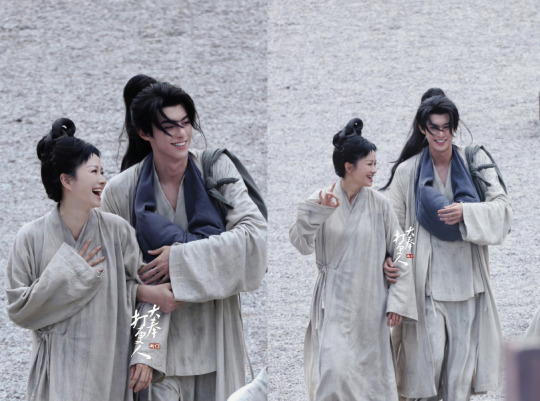
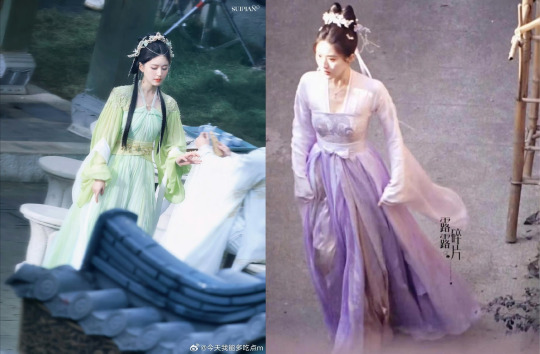



chinese guzhuang fashion
#young actress and actors are cornering the guzhuang market#that's why the industry is becoming more and more competitive#when it comes to guzhuang idol dramas/guouju古偶剧 with fantasy elements(like xianxia dramas)#cnetizens are bored with the same old faces#media has found that young actress and actors (20-27 years old) especially new pretty faces are more appealing to viewers#cnetizens can actually be mean to actress and actors (over 33 years old) cast as lead characters in guzhuang idol dramas#reasons is that lead characters are usually portrayed as teenagers or really young people#and the audience find it very weird to have middle-aged people cast such characters#especially scripts are usually adapted based on fictions#so fans of the novels would be furious about such casting#besides cnetizens want to see normal aging faces#but these shows always use excessive filters and PS#causing the midle-aged faces to be fake and weird#i once saw really mean comments on douyin for xianxia dramas casting middle-aged actress getting over one hundred thousand likes#actress and actors in zhengju正剧 guzhuang dramas or luodi落地 guzhuang dramas are not affected by this#like telling a realistic down-to-earth story or story inspired by real history or related to folks#and there is no fantasy or xianxia elements#china#fashion#chinese fashion#guzhuang#cdramas
306 notes
·
View notes
Text

'Speak of neither to me!' said Andreth. 'I desire neither. I was
young and I looked on his flame, and now I am old and lost. He
was young and his flame leaped towards me, but he turned
away, and he is young still. Do candles pity moths?'
'Or moths candles, when the wind blows them out?' said
Finrod. 'Adaneth, I tell thee, Aikanar the Sharp-flame loved
thee. For thy sake now he will never take the hand of any bride
of his own kindred, but live alone to the end, remembering the
morning in the hills of Dorthonion. "
J.R.R.Tolkien, Athrabeth Finrod ah Andreth, History of Middle Eart Vol. X, Morgoth's Ring
Andreth and Aegnor for the Tolkien Advent Calendar!
#silmarillion#silmart#tolkien#tolkienart#the silmarillion#aegnor x andreth#aegnor#andreth#athrabeth finrod ah andreth#andreth saelind#middle earth#tolkien elves#jrr tolkien#tolkien fanart#tolkien legendarium#tolkien fandom#watercolor#*mine: art#history of middle earth
154 notes
·
View notes
Text
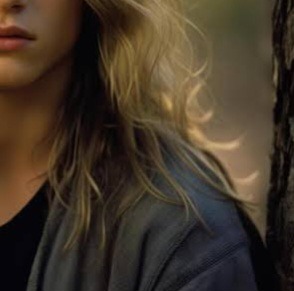
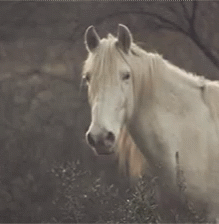


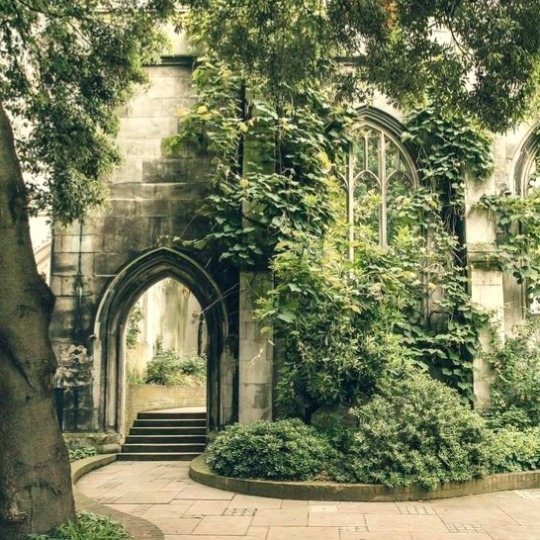
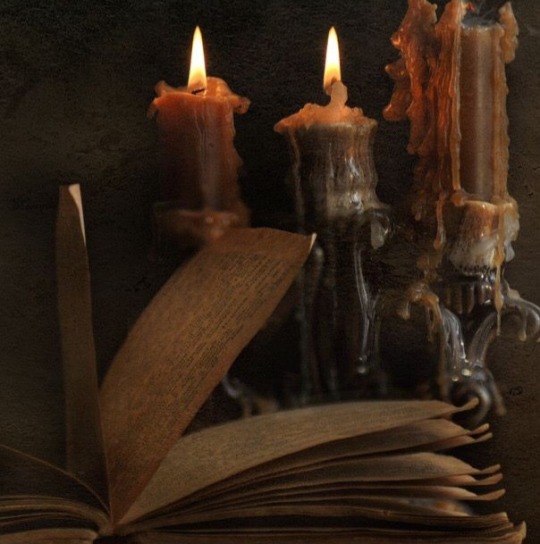
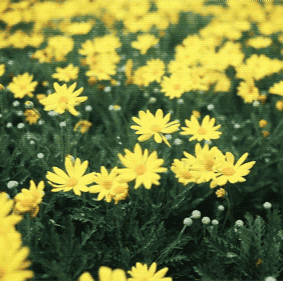
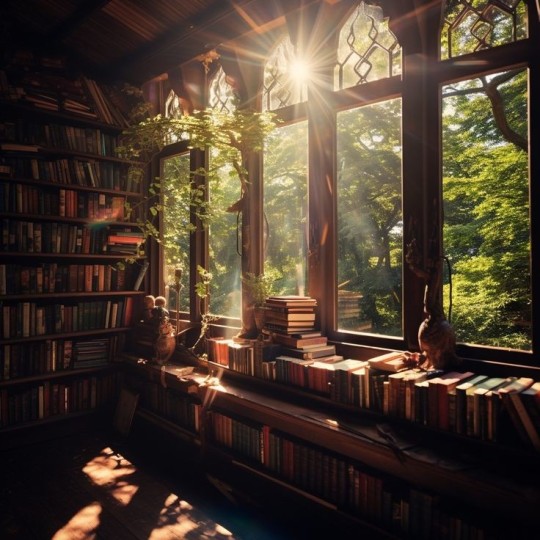

Glorfindel and Erestor
#glorfindel#erestor#glorestor#aesthetic#tolkien#the lord of the rings#the silmarillion#the history of middle-earth
73 notes
·
View notes
Text


So for those who may not know, Tolkien invented Anglo-Saxon names for the sons of Fëanor (and the Valar and various place names) for an Anglo-Saxon translation of the Quenta Noldorinwa (the beginning of which he actually wrote). This is all in HoMe IV: The Shaping of Middle-earth.
Now, I hear your "I cannot explain", Christopher Tolkien, and as someone utterly ignorant of Anglo-Saxon, I should refrain... but as someone who is unhinged about these characters and their relationship, I must.
Dœgred Winsterhand, the 'left handed'. The one who lost his hand. And his brother, Dœgmund, with the same initial element to his name, plus a word meaning hand. That also means protector. Dœgmund, the hand of Dœgred, his protector, beside him until the end.
These two...🥹😭
#maedhros#maglor#quotes#the history of middle-earth#yes you have my blessing to turn this into a maemags post if you so desire
292 notes
·
View notes
Text

#d draws#i think its rlly funny that jake just picks up his spidergirl comic in the middle of an earth shattering history lesson from dirk#hs.dirk#hs.jake
75 notes
·
View notes
Text
So I am reading The Lost Road (HoME 5) now and this fragment made me laugh out loud:

WOULDN'T IT BE INTERESTING CHRISTOPHER??? 😂😂😂
#tolkien#the history of middle earth#ereinion gil galad#I get it#Christopher was just one of us#Using this opportunity to ask 'wouldn't it be nice if you told us WHO WAS GIL'S DAD. DAD???'#I am dying#Send help
286 notes
·
View notes
Text
“Sauron had never reached this stage of nihilistic madness [as Morgoth]. He did not object to the existence of the world, so long as he could do what he liked with it. He still had the relics of positive purposes, that descended from the good of the nature in which he began: it had been his virtue (and therefore also the cause of his fall, and of his relapse) that he loved order and co-ordination, and disliked all confusion and wasteful friction.”
— J.R.R. Tolkien, The History of Middle-earth, Vol. 10, Morgoth's Ring
This passage is very crucial to understanding the idea of a repentant Sauron. Tolkien openly admits that Sauron fell from grace, went back to his goodness, and then fell again. The phrase “and therefore also the cause of his fall, and of his relapse” points out that Sauron didn't just fall once and stayed there. He attempted to rise above his crimes after the fall of Morgoth, and for an unaddressed reason, he relapsed and came back to them later on.
Tolkien said it first, folks. Relapse is a deterioration after a temporary improvement. You can't relapse without improving first.
#sauron#halbrand#sauron meta#the rings of power#rings of power#trop#j.r.r. tolkien#morgoth's ring#the history of middle earth
510 notes
·
View notes
Text
But the children of Indis shall redress [Feanor's] errors and therefore I am glad they should have being, and Indis hath my love.
-- Miriel on the marriage of Finwe and Indis and the births of their children, Morgoth's Ring, "Laws and Customs Among the Eldar"
127 notes
·
View notes
Text
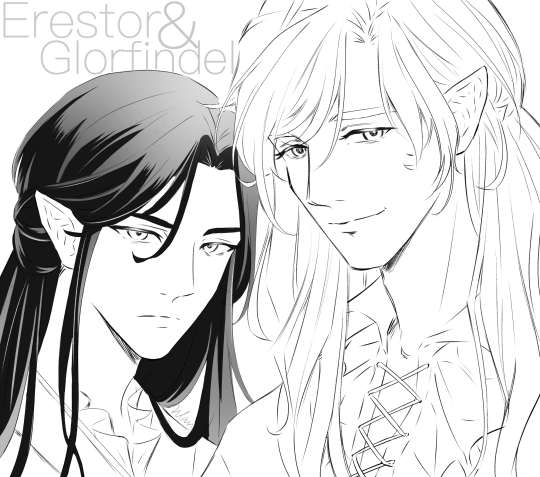
🩶💛
#i just needed to see them in this style 🤭#erestor#glorfindel#glorestor#tolkien#the silmarillion#the histories of middle-earth#ulan's art
47 notes
·
View notes
Note
Hello, in fic I've come across mentions of
- the elves stopping frequently on their journey to Aman to have sex (and Orome urging them forward by creating storms?)
- elf sex being too intense for most mortals to survive
I think these come from HoME or NoME (or similar sources), but I've never seen the actual quotes. There might be other things related to elf-sex in there as well.
So I guess my question is: What else did Tolkien mention about elf sex, apart from (the already relatively well-known) LaCE?
Elf Sex Lore
There comes a time in every Tolkien fan’s journey when they come upon the Professor’s writings on Elf sex — and, since 2021, there are even more! Elf Sex Lore remains a hot topic as the fandom continues to experience the aftershocks of the spurt of new lore that came with the publication of The Nature of Middle-earth (NoMe) in 2021.
As you say Anon, before NoMe was published, the fandom’s primary resource on Elf sex was the (in)famous essay Laws and Customs Among the Eldar (LaCE), published in 1993 in Morgoth’s Ring, the tenth volume of the History of Middle-earth series. LaCE is full of juicy (or not-so-juicy) lore about Elven aging, marriage, gender roles, naming, death, and rebirth.
It is in relation to the first two that we get some details on Elf sex, such as the knowledge that “it was the act of bodily union that achieved marriage, and after which the indissoluble bond was complete.” (Laws B). We also learn that:
“…the Eldar say* that in the begetting, and still more in the bearing of children, greater share and strength of their being, in mind and in body, goes forth than in the making of mortal children. For these reasons it came to pass that the Eldar brought forth few children; and also that their generation was in their youth or earlier life, unless strange and hard fates befell them. But at whatever age they married, their children were born within a short space of years after their wedding. For with regard to generation the power and the will are not among the Eldar distinguishable. Doubtless they would retain for many ages the power of generation, if the will and desire were not satisfied; but with the exercise of the power the desire soon ceases, and the mind turns to other things. The union of love is indeed to them great delight and joy, and the ‘days of children’, as they call them, remain in their memory as the most merry in life; but they have many other powers of body and of mind which their nature urges them to fulfil.”
The History of Middle-earth Vol. 10: Morgoth’s Ring, ‘The Later Quenta Silmarillion (II)’, Laws B
*Note how this paragraph is introduced: “the Eldar say”. Phrases like this signal to us that LaCE is not written from a Elvish point of view. There are indications elsewhere clearly pointing to a human author with a human audience in mind.
Translation: Elves use up a lot of energy in baby-making, including in the sex part (“begetting”) but even more in the pregnancy and birthing part (“bearing”), so they don’t have a lot of children and they do so early in life, shortly after marriage. But even if they marry later in life, Elves are still able to have babies because being able to and wanting to reproduce are the same thing for Elves. But once they’ve fulfilled the desire to make babies they’re good and turn to other things. Still, they look back on the time of baby-making as “the most merry in life”.
In most (if not all) cases, when Tolkien writes about sex he is writing about reproduction. Did Elves have sex solely for pleasure? Maybe; I cannot find anything that says they didn’t. I also can find little conceptual separation of sex and reproduction in Tolkien’s writings. Make of that what you will.
(At this point I want to reiterate a principle central to this blog: it’s about presenting what canon says; it is not about casting judgement on creations that subvert, reinterpret, or ignore canon, none of which makes a work lesser than one which adheres strictly to canon.)
So what did NoMe add to our knowledge about Elf sex? First of all, let’s make sure we all know what NoMe is.
What is The Nature of Middle-earth?
NoMe is a volume of texts by J.R.R. Tolkien collected and edited by Carl Hostetter. It is basically a supplement to the last three volumes of The History of Middle-earth (Morgoth’s Ring, The War of the Jewels, and The Peoples of Middle-earth), which cover a period from the late 1950s to his death during which Tolkien was undertaking a rather massive project of worldbuilding, working out the structures underlying his Silmarillion mythology in preparation for revising and publishing what he had written of it before ‘a sequel to The Hobbit’ (LotR) took him away from it for the better part of two decades.
Christopher Tolkien in Morgoth’s Ring called this undertaking “analytic speculation concerning [the] underlying postulates” of his world (Foreword to Morgoth’s Ring). That’s how we end up with essays like LaCE and the philosophical debate about the fates of Men and Elves in Athrabeth Finrod ah Andreth.
The texts in NoMe all date to around the same time and deal with the same sorts of questions about the physics and metaphysics of the world: it contains the essay on ósanwë, for example.
The Context of the NoMe Sex Lore
The first section of NoMe, ‘Time and Ageing’, is where we get the new lore on Elf sex. As it happens, the sex lore is rather incidental to extensive ruminations two core questions:
How did Elves experience the passage of time and how did they age?
How did the population of Elves go from 144 at Awaking to a sufficiently high number (around 30 000) when they reached the shores of Beleriand on the Great Journey?
(It is not relevant to get into why 144 and why 30 000 here; suffice to say those are the numbers Tolkien wanted and he expended great imaginative and mathematical energy trying to make them work.)
A note on the textual context: Anyone who has ever engaged in worldbuilding knows how it can go. You think (for example), “Okay, I need to develop a backstory for this character’s spouse,” and before you know it you are knee-deep in invented genealogies and geographies and Eru-knows-what-else.
It’s important to bear in mind that this is what Tolkien was doing. The quotes we are about to look at (yes, very soon!) are from a collection of evolving (and unresolved) notes in various states of refinement from barely legible scribbles to carefully penned essays. I will let you decide what that means to you based on your personal definition of canon, but I wanted the textual context to be clear.
Elf Sex Is Intense
In relation to Question 1, Tolkien considers the time-scales of Elven growth, including pregnancy. In the essay under discussion, Tolkien decides that Elven pregnancy should, like human pregnancy, take about 3/4 of a year. Oh no - not that kind of year. A yên, a ‘long year’, the unit used by the Elves and to which the matter of their bodies (their hröar) is bound. Elves gestate for 108 Sun years.
I know what you’re asking: If the pregnancy lasts 108 years, then how long does the sex last?
No? No! You’re probably asking yourself why Tolkien hated Elf-women so much (don’t worry, he says there’s no pain…)! But Tolkien was interested in the first question, which he answered thus:
“On the other hand the act of procreation, being of a will and desire shared and indeed controlled by the fëa, was achieved at the speed of other conscious and wilful acts of delight or of making. It was one of the acts of chief delight, in process and in memory, in an Elvish life, but its intensity alone provided its importance, not its time or length: it could not have been endured for a great length of time, without disastrous “expense.”” (NoMe, p. 24)
An earlier version of this passage, which you may also come across in fandom, comes to a similar conclusion:
“But the act of procreation not being one of growth until the union of the seed and being under full control of the will does not take long - though it is longer and of more intense delight in Elves than in Men: too intense to be long endured.” (NoMe, pg. 27)
Translation: Pregnancy, like other aspects of physical growth, is a process of the hröa over which the fëa has no control; thus it is bound to unfold on “Elvish time”, i.e. 1 year = 144 years. But the sex leading up to it is an act of the fëa and under its control and therefore occurs at a “normal” speed. The Elves love it, too! But not because of how long it lasts, which is a regular amount of time, but because of how intense it is. In fact, it is so intense that if it were any longer they would suffer “disastrous “expense”.”
What is this “expense”? Basically, it’s referring to the usage of an Elf’s natural “vitality” — far greater than that of Men but not infinite. As far as I can tell, this passage means that having intense Elf sex for too long would have spiritual results similar to Míriel’s bearing of Fëanor, or Fëanor’s creation of the Silmarils. Too much of their spirit would be expended (used up) in the act, with possibly disastrous consequences.
These are the quotes from which, I think, originate the rumour that Elf sex was too intense for mortals to survive. As you can see, the discussion is about Elf/Elf relations. Elf sex is too intense for Elves to endure for too long. Anything about what this means for Elf/Mortal sexual relations is fan conjecture.
That’s the Elf Sex nugget from Tolkien’s considerations of Elven growth rates: Elf sex (between Elves) is intense but of a normal duration.
Elven enthusiasm for baby-making delays March
As you can imagine, more nuggets are unearthed in relation to Question 2, which boils down to Tolkien crying: “I need the Cuiviénen Elves to breed a lot and quickly!”
Initially, Tolkien developed some Elven life cycle schemes that had them taking a leisurely approach to reproduction, with each generation taking many hundreds, even thousands, of Sun years to materialise.
This scheme did not work for getting him from 144 to ~30k in the timeframe he wanted. So, he made some adjustments to the scheme with respect to the timing of Elven maturity and consequent desire to begin reproducing — and then set about getting those Elves procreating!
One of the solutions he entertained was giving the Elves opportunities to reproduce on the Great Journey. He laid all of this out in a timeline (NoME, p. 49-53) detailing where and for how long the host of Elves would pause because of the “desire to beget children” (p. 49).
Reading this timeline, it can become increasingly comical each time this desire to reproduce (i.e., have sex) halts the host. It can start to read like, “The Elves took forever to cross Middle-earth because they couldn’t stop banging!” And, in a way, that is what happened. But bear in mind the context is an attempt at solving the problem of increasing the Elven population to a number Tolkien considered satisfactory for his worldbuilding endeavours. An Elven enthusiasm for sex is there, but it’s not the whole picture.
There are several points on the timeline when Oromë hangs out with the Elves or checks in on them, and he does become increasingly concerned with their begetting-related delays. For example:
“About 2000 pairs (of available Telerin 8th gen. of 4,950) beget children in the spring 1130/80. The Chiefs and Oromë are disturbed.” (NoMe, p. 51)
(“The Chiefs” are Ingwë, Finwë, and Elwë.)
And:
“Either by chance, machinations of Sauron, and/or because Oromë withdraws protection (hoping to make the Eldar less content with their new Home (Atyamar), winters are hard and the weather worsens.” (NoMe, p. 51)
The second quote is the origin of that rumour about Oromë creating storms to urge the Elves on because they were having too much sex. Is it canon? Not quite: Oromë didn’t create the storm, for one, and the emphasis is on sex for the pleasure of children more than the pleasure of sex on its own (though, as we know from the previous discussion, sexual pleasure was certainly had!). But the rumour you've heard is not without basis in Tolkien’s notes.
The First Elves Really Loved Sex
There’s one more Elf sex nugget in NoMe that I’d like to end with. While scrambling to get his Cuiviénen Elves reproducing at an adequate rate to reach his population-at-finding target, Tolkien came up with what he calls the “Quick prolific” scheme (p. 99).
“The Quendi in their first few generations before the March (or reaching Valinor) must — as is quite reasonable — be made far more eager for love and the begetting and bearing of children. *They must have larger families, at shorter intervals between births.” (p. 107)
To explain this attitude of reproductive eagerness in the first few generations of Elves, Tolkien coins the term “philoprogenitive” — they love to procreate! Procreating — not artistic and intellectual pursuits or exploration or leadership as with later generations — is their number one priority in life. So much so that “they mated almost at once with their predestined mates” (p. 54).
Not only that, but they have so many babies! In one version of the scheme, 12 children per couple in the first generation (p. 108). (This soon changes to 6 per couple. Philoprogenitive they may be, but no one gets to outdo Fëanor).
As with the highly intense Elf sex and the Great Journey delayed by procreating, this is another bit of NoMe lore with great imaginative potential. As we learn from LaCE, Elves enjoyed sex, quite a bit actually, but they enjoyed a lot of other things also, and after a period of baby-making they would usually move on from sex (though they would always remember it fondly). But the First Elves, those early generations by the shores of Cuiviénen? No such balance between sex and other pursuits. It was all about sex and procreation for them.
Of course, what we’ve been looking at are drafts and notes. While all written around the same time (late 1950s to early 1960s), none of the texts here examined were ever finalised and many of them don’t even agree with each other. Tolkien was experimenting; he was worldbuilding. And with the publication of these notes in NoMe, we in turn get some intriguing ingredients for worldbuilding of our own.
So, do as you like with the Elf sex lore. But if you’re looking for a great setting for some canon-compliant smut, may I suggest Cuiviénen?
Resources
PDF of LaCE
Mythgard Academy’s seminars on The Nature of Middle-earth. You don’t actually have to have read or own NoMe to follow these discussions. Great for getting a handle on the material, and ideal for listening as you work your way through reading.
#nature of middle-earth#history of middle-earth#laws and customs among the eldar#anon#happy valentine's day
191 notes
·
View notes